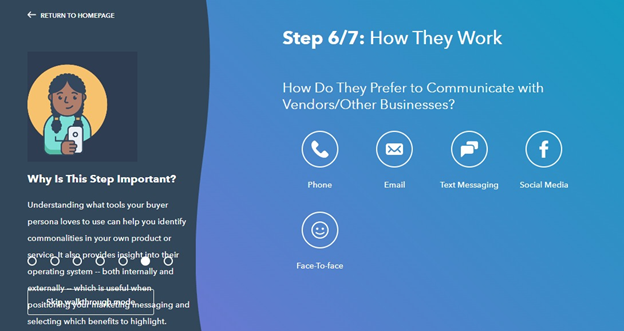Best of PMTimes: 5 Tactics To Successfully Handle Multiple Projects Simultaneously
Managing multiple projects at the same time can be an absolute n-i-g-h-t-m-a-r-e.
You need to keep track of your projects’ moving parts, ensure you’re using the right processes and strategies, stay within deadline, keep your employees motivated, and be mindful of your expenses.
Data even shows that on average, 88% of remote workers experience miscommunications and inconsistent leadership with team members, highlighting the importance of proper program and project management.
Sadly, we just scratched the surface. So much more goes into project management than the things we pointed out.
The good news is, there are tips and tricks to help you manage multiple projects simultaneously.
Continue reading to learn five proven tactics that will help you run your projects efficiently.
1. Stay On Top Of Your Work Schedules
Regardless of how carefully you planned your projects, everything can easily go off track if you don’t establish a schedule that includes your team’s work for the month, quarter, or year.
For instance, without a clear schedule, team members might fail to prioritize tasks, overlook critical jobs, and miss deadlines, which can seriously hinder your project’s completion and even impact the result’s quality.
Use reliable work scheduling software to ensure every project team member is on the same page, keep your workflows moving seamlessly, and keep everything on track.
For instance, Deputy lets you build work schedules in minutes by using its easy-to-use interface to schedule the right team members at the right time across various locations and roles.
You can easily create shifts, assign them to staff members, drag and drop to change them, copy schedules, modify them accordingly, and export them to a CSV file, spreadsheet, or print them.
You can also send the schedule directly to your team through mobile or desktop. If you change the schedule, the assigned person gets a notification, and they can accept the confirmation request.
A robust scheduling tool helps ensure your lines don’t get crossed, work gets done, and your project deadlines are met.
This helps keep your multiple projects on track and your team members more productive. Your project schedules will also be maximized for optimum efficiency, avoiding potential delays.
2. Prioritize Tasks
With so much on your plate, it can be tempting to tackle the easiest projects first, but you must resist, or you could kill your team’s productivity and efficiency.
Prioritize based on tasks that will have the most significant impact on your project and program goals. This helps you manage several priorities while working on multiple projects effectively.
Doing so allows your team to work strategically on both micro (i.e., organizing daily to-dos based on importance) and macro (i.e., moving low-impact projects to the following quarter) levels.
Let’s say your team is working on four product launches simultaneously with the overarching goal of increasing customer revenue.
While the four projects require about the same amount of time, effort, and resources to complete and roll out, assess which one has the potential to generate a bigger impact on your new customer revenue than the other three.
Prioritize the project (or projects) that have the most significant contribution to achieving your goals.
This helps you manage your resources and allocate your time better while ensuring your efforts align with your project goals and deliver your desired results.
Advertisement
[widget id=”custom_html-68″]
3. Establish Goals And Plans
Without establishing a standard project planning process or workflow, you’ll likely manage each of your projects differently.
This can lead to issues down the line, such as inconsistencies in your deliverables and precious time wasted on setting up new processes for each project.
That is why you need to have a solid plan, establish standard processes, and identify responsibilities from the get-go.
Outline everything from your goals, each step, and task necessary for project completion, schedules and deadlines, and the persons and teams responsible for specific jobs at the project level.
At the program level, develop plans, processes, and clarify responsibilities. Establish team-level goals and communicate the projects crucial to achieving those objectives.
You can start outlining your goals using a Specific, Measurable, Accurate, Realistic, and Timely (SMART) approach and this sample goal-setting template.
You can use other templates as references and build on those to develop your project and program objectives.
Optimize your project management processes by setting team-wide standards. For instance, you can require project team leads to submit a brief before outlining a project plan for big projects.
You can also create templates for projects your team often handles to ensure consistency across projects and save time and effort.
Clear goals, plans, and responsibilities help your teams avoid inconsistencies in processes and deliverables.
4. Conduct Systematic Progress Updates
Tracking status and progress updates in a multi-project environment are critical to keeping stakeholders and key project players in the loop.
After all, you wouldn’t want your clients, for instance, to be breathing down your neck because you didn’t give them any status reports, making it crucial to establish a systematic updating process.
Establish smart, systematic status updates so that you can manage stakeholder expectations efficiently.
Below are a few tips for doing strategic and systematic project status updates.
- Define expectations. Layout the specific steps task owners or the team members in-charge of particular tasks are expected to follow. Identify a time frame for updating relevant stakeholders, whether every three days, weekly, monthly, etc.
- Include a high-level overview of key areas in the project. Add several bullet points that provide an update on the accomplishments, progress, and upcoming work for each key area of your project’s status. This ensures essential points are covered, and stakeholders get all the necessary updates they need.
- Schedule accountability. Have third-parties, such as staff in another department, the project sponsor, or other stakeholders, conduct reviews to ensure the resource person or task owner follows protocol and the specified updating time frame to a tee.
Implement a systematic status updating process to keep your project team motivated, ensure they understand the project plan, why it’s crucial to stay up to date, and clearly see the multiple demands your team must meet.
5. Delegate And Empower Team Members
Exercise effective delegation in your resource management by adopting clarity, authority, and accountability.
For instance, empowering your graphic designer to create a landing page for a new project means making sure he/she is absolutely clear about the task by providing a work breakdown structure.
This work breakdown structure of building a landing page campaign for a new product from Kanbanize is a good example.
A work breakdown structure outlines the phases of the project process clearly.
Additionally, to ensure the project process and phases are when delegating, be sure to:
- Clearly communicate the work breakdown structure
- Set a project deadline
- Relay specific client expectations
- List down the available resources the task owner has
- Describe the workload
- Provide him/her the authority to make and carry out decisions
Clarity ensures your team is clear on the direction. Team members avoid any guesswork and prioritize critical tasks and projects.
A clear work breakdown structure and project scope will also empower teamwork that boosts productivity while giving members a sense of fulfillment for meeting multiple demands.
Leverage a reliable project management tool that can streamline your work breakdown structure’s workflows and processes.
Data can back up the effectiveness of using the right project management tool with 77% of high-performing projects using project management software.
What’s Next?
Handling multiple projects at the same time is inevitable in project management and any efforts you take on.
While the tips in this guide are in no way guaranteed formulas for success, these are good building blocks to help develop your strategies for effective and strategic multiple project management.
Leverage the tactics we shared to stay on top of your projects’ moving pieces, meet your deadlines, and achieve your goals.








